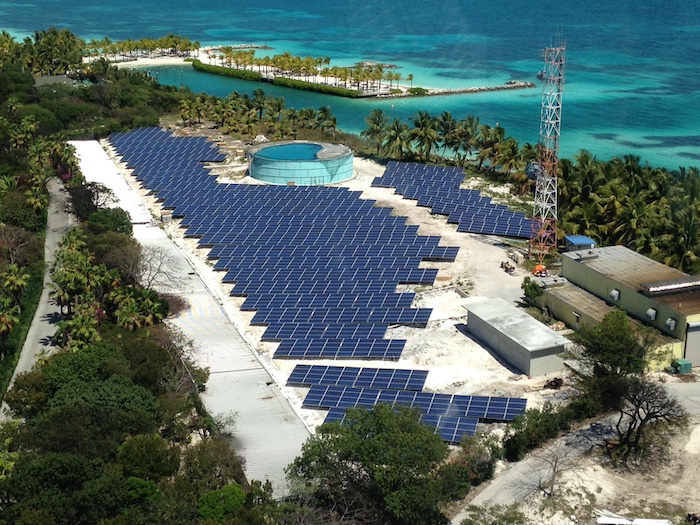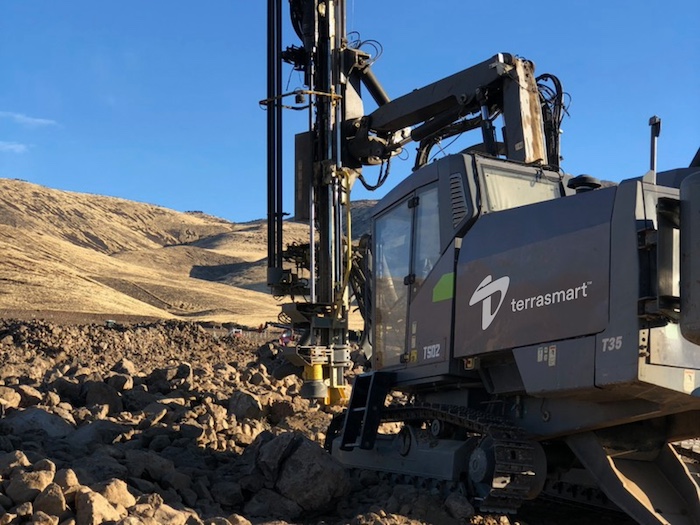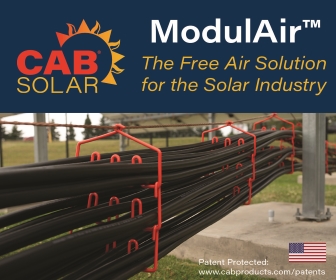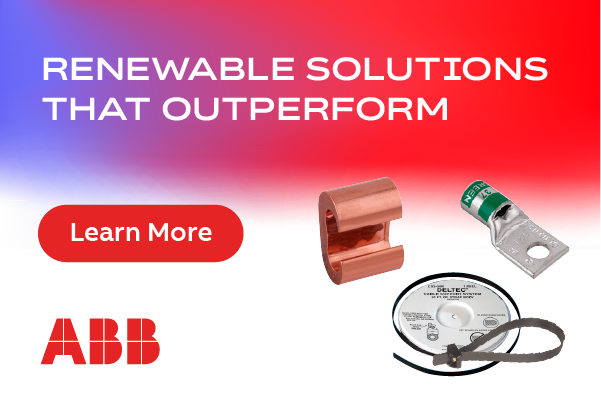PV in the Age of Climate Readiness
The new frontier of solar adaptability requires the right ground-mount systems for today’s extreme weather and terrain
Climate readiness is the new normal in utility-scale PV. EPCs, developers, and asset owners facing complex projects must assess ground-mount solutions designed specifically for the harshest weather. More than performance in heavy snow, deep freeze, and high winds, climate readiness requires intelligent systems to keep solar assets safe during weather events while generating peak production all year.
But it's not just weather challenges. Today’s PV systems must go on less-than-ideal sites, with steep or uneven terrain and unforgiving soils. Many may ask how to guarantee foundation reliability on such sites, and ensure seamless connections with racking and tracking systems. Also, how do EPCs and developers contain installation risks while optimizing long-term O&M? Overcoming these challenges shapes the future of climate readiness for utility-scale PV.
Whether it's a system on a Caribbean reef, a hilly and rocky site in the Northeast, or a single-axis tracker (SAT) system in high winds, racking solutions that push innovation’s boundaries offer unique advantages.

Making solar possible in paradise
The 4-MW solar and 10-MWH storage microgrid on the idyllic Bahamian island of Chub Cay required strategic planning and creative solutions. Caribbean businesses struggle with exorbitant electricity prices, poor reliability, and polluting diesel-powered generators. Because solar costs less than half of conventional power, a private resort on Chub Cay chose to install a self-sustaining solar microgrid with battery storage.
Above ground, the corrosive marine environment and expected hurricane wind speeds required specialized foundation and racking systems capable of withstanding extreme conditions. The situation was equally unfriendly underground, where coral and solid limestone soils made traditional pile foundations impossible.
Ground-mount foundations required 5,700 pounds of tension capacity, which meant that ground screws were the only viable option to penetrate the island’s solid oolite limestone. A screw with a custom spiral thread allowed a lower embedment depth for a faster and more cost-effective installation. The alternative (driven piles in costly concrete foundations) simply wouldn’t work, either structurally or financially.
Managing risk also was a key consideration. Ground screw foundations eliminate refusal risk. Using a fixed racking system that could integrate seamlessly with the ground screw foundations was an important requirement. The high-strength steel, low-tilt racks offered a customized system able to tolerate hurricane-force winds up to 185 mph and gusts up to 210 mph, with a specialized module frame mounting for extra durability.
Despite being the largest solar plant in The Bahamas and one of the largest grid-forming systems, the microgrid was built and commissioned without delays in eight months.
Contouring the steepest slopes

When a community solar project needed a tracking system for a 6.5-MW project on a mountainous site in Maine, it involved considering varying elements of risk. With a state average snowfall of 50 to 80 inches, weather was a key influencer in selecting and designing a solar tracking system.
Rocky and frost-susceptible soil made ground screws the only viable foundation option, eliminating refusal risks and ensuring against frost heave despite the 50-inch frost depths.
Precipitous slopes throughout the rocky landscape presented another challenge altogether. A highly flexible SAT conformed to the undulating terrain with a leading 20 percent grade tolerance. Using project feasibility software helped optimize the SAT to generate 4.3 percent more energy than an alternative tracker with a 15 percent slope tolerance, and 4.7 percent more than a 10 percent slope-tolerant system.
Because of this field adjustability, site grading costs were substantially reduced while maximizing the land’s higher yield potential. The result was a 7.1MW capacity potential without grading; the other options offered 5.9 MWs (15 percent SAT) and 4.6 MWs (10 percent SAT) without grading.
There are a few ground-screw-adapted SATs on the market. When assessing options, developers should consider the interface between the tracker and the foundation. An adaptable A-frame structure and telescoping screw extensions deliver best-in-class vertical adjustability of up to 36 inches to overcome undulating topography, significantly reducing grading requirements.
Weathering extreme wind with a 1P SAT
A 3-MW community solar project in Illinois chose a new 1P tracker for its value-engineered, wind-resilient design and ease of installation. Proprietary engineering tools were used to determine site-specific wind and snow loads, ensuring an optimized system. Through its resilient design, the 1P was deployed to withstand the 105-mph wind load in Illinois.
Over 10,000 wind coefficient values were processed alongside an average of 63 different load combinations. This allowed engineers to accurately calculate the peak load combinations across the site based on terrain, topography, and location. With real-time feedback, this automated process helped determine an ideal configuration such as optimal foundation positions and torque tube size.
To achieve aerodynamic stability, the engineering team spent more than 700 hours conducting wind tunnel testing with a leading third-party testing laboratory, optimizing the balance of wing length, stiffness, and damping. This analysis determined the best stow strategy for the 1P system: a zero-degree angle to reduce static and dynamic wind forces, with dampers to ensure aeroelastic stability.
Ensuring tracker performance with advanced real-time software
For asset owners requiring the highest level of performance from their tracker systems, intelligent software can increase energy yield, protect assets in inclement weather, and minimize downtime.
Look for systems that maneuver each tracker row to limit shading, maintaining optimum exposure and production to maximize project efficiency and value. Systems that include a weather station, network controller, and one row box per tracker row work together to provide real-time performance data.
Bringing it all together with one integrated partner

When dealing with tough weather during construction, or simply integrating fixed-tilt or SAT systems with different foundations, it’s best for the manufacturer to also lead the mechanical installation.
A 61-MW data center campus project in the Nevada desert near Reno illustrates this point. After previous efforts failed to drive a pile system into the site’s rocky terrain, it took employing and integrated a survey, design and engineering, manufacturing, and complete mechanical installation offering to finally expedite the project’s construction schedule. In the end, three rock-drill machines secured ground screws, assembled and positioned the legs, and installed the fixed-tilt racking system quickly and efficiently.
 Ameer Abuhamdeh is an Innovation Engineer of product development for Terrasmart. Ameer’s unique ability to integrate his creativity and analytical skills, paired with hundreds of hours spent in wind tunnel and product testing, have produced innovative solutions for Terrasmart’s ground mount systems team. Ameer has a Bachelor of Science in Mechanical Engineering from the University of Cincinnati. His education, experience, and collaborative approach has showcased his passion in wanting to create a more sustainable future for all. Ameer Abuhamdeh
Ameer Abuhamdeh is an Innovation Engineer of product development for Terrasmart. Ameer’s unique ability to integrate his creativity and analytical skills, paired with hundreds of hours spent in wind tunnel and product testing, have produced innovative solutions for Terrasmart’s ground mount systems team. Ameer has a Bachelor of Science in Mechanical Engineering from the University of Cincinnati. His education, experience, and collaborative approach has showcased his passion in wanting to create a more sustainable future for all. Ameer Abuhamdeh
Terrasmart | https://www.terrasmart.com/
Author: Ameer Abuhamdeh
Volume: 2024 May/June









.png?r=1175)


